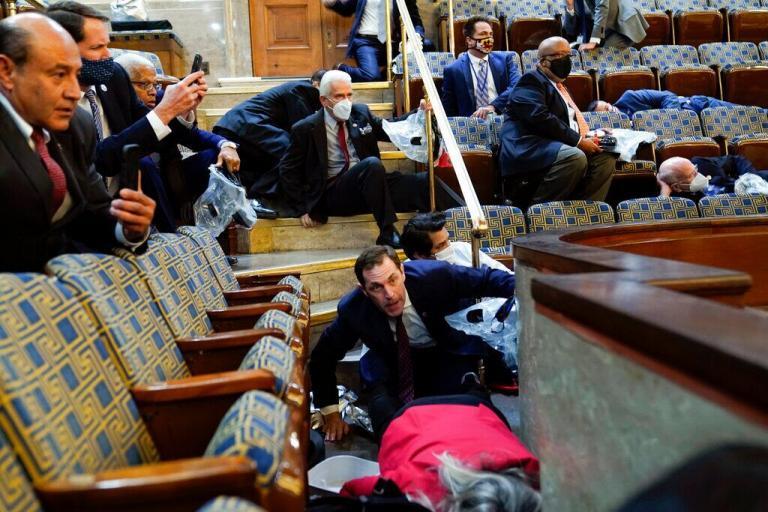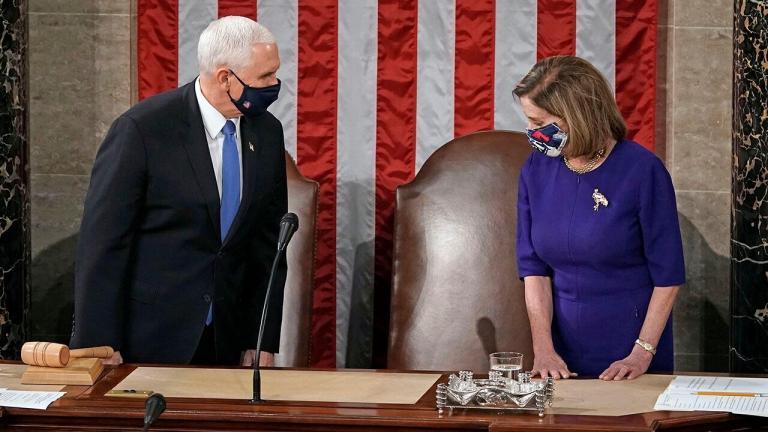
Neil O’Brien is co-Chairman of the Conservative Party’s Policy Board, and is MP for Harborough.
At last, the happy ending. As EU politicians squabble, we’re vaccinating faster than anywhere else in Europe. The Church of England is allowing cathedrals to be used as vaccination centres, and the footage of orderly queues in Salisbury and Lichfield made me feel like we were in the happy ending of Powell and Pressburger’s patriotic war movie, A Canterbury Tale.
But whenever a movie has a happy ending, I worry someone will make an awful sequel: 2020 the revenge. As the Prime Minister said, alluding to The Great Escape, it would be tragic to “tangle ourselves in the last barbed wire” just as we escape from the pandemic.
He’s right. Ministers face two uncertainties.
The first: how fast we can go in opening up without triggering an upsurge in conventional Covid.
The second: how to manage the risk of new, vaccine-resistant Covid strains being imported – or equally importantly, developing here.
Armour with holes in
Clearly, we can’t just open everything tomorrow. Until mid-February we’re vaccinating the over 70s. But half of Covid patients in intensive care are under 60. Even once we vaccinate younger groups, it takes up to three weeks to fully kick in.
And the vaccination programme is a suit of armour with holes in. Some older people won’t get jabbed, and no vaccine is 100 per cent effective. The Oxford vaccine showed a 59.5 per cebt reduction in the symptomatic cases in clinical trials. A more recent paper suggested a 67 per cent reduction.
Currently, older people are protected not just by growing vaccination rates, but national lockdown and their very high levels of social distancing. Only over time, as we open up, will we really find out how big the holes in our armour are. And we don’t yet know how long we’ll be in this tricky phase between vaccinating the most vulnerable, and getting to the full benefits of herd immunity.
We need to pace ourselves. We don’t want to go for a big bang reopening only to trigger a new wave and be forced backwards. In the coming weeks we’ll start to fully reopen schools – quite rightly – as the first step back to normality. Reopening schools will increase virus transmission. The uncertainty is by how much.
A study in Nature looked found closing educational settings was the second most effective intervention to reduce transmission. A study in The Lancet found school closures cut transmission. A study from the US showed statewide school closures reduced new cases. In December SAGE concluded that “overall, accumulating evidence is consistent with increased transmission occurring amongst school children when schools are open, particularly in children of secondary school age (high confidence)”.
The Nature paper found similar effects for both primary and secondary schools, and the number of school based outbreaks in the UK is similar for both, though ONS data (about to be updated) suggested older children were much more likely to be exposed to the virus. There’s options about how we reopen in areas where rates remain high: primary and secondary; different rotas or protective measures – there are lots of choices if needed.
Given the uncertainty about the effect of schools reopening, we should allow time between opening one thing (schools) and the next, so we can judge their effects.
It’s time for Burkean conservatism: As Burke wrote: “By a slow but well-sustained progress, the effect of each step is watched; the good or ill success of the first, gives light to us in the second; and so, from light to light, we are conducted with safety through the whole series”.
New variants
The harder question is how to manage the risk from new variants. We’re seeing lots of them around the world, but also within the UK. There was the Kent variant, now there’s Bristol and Liverpool variants. A variant from South Africa sadly made its way here, but one from Brazil seemingly hasn’t.
How big is the risk from vaccine-evading variants? Evidence is emerging. The Kent variant has a less dangerous N501Y mutation, which makes it more infectious, but doesn’t let it dodge vaccines.
The South African variant has that plus the E484K mutation, which may reduce vaccine efficacy.
The Financial Times reported last week that in clinical trials Novavax’s new vaccine was found to be 89 per cent effective in its UK trial (where the E484K mutation is rare), but had just 49 per cent overall efficacy in South Africa. Lab evidence also suggests it may make the holes in our armour much bigger. The paper also recently reported that the South African strain reduced the effectiveness of the Oxford / AstraZeneca strain too.
Concerningly, the Liverpool variant adds the E484K mutation to “old” Covid, while the Bristol variant combines the Kent variant with the E484K mutation, making it like a home grown version of the South African strain. We’re still learning how coronaviruses evolve to dodge immunity, how they do it, and how we should respond.
I support the measures the government is taking to tighten our borders for starters: requiring negative tests pre-travel, hotel quarantine from risky countries, making sure travellers do isolate. It’s a monumental task to set these systems up. But worth it. Covid is likely to bounce around the world mutating for some time. Once in place, we can steadily toughen these border controls as appropriate.
The prize of us getting back to normal life in the UK seems worth the price of inconvenience for travellers: if you hate lockdowns, you should back the toughening of borders.
Sadly, managing the risk from new variants isn’t only about borders, because we’re seeing new variants originating in the UK. As vaccinations rates go up, the evolutionary incentive to mutate and dodge them increases. It’s like anti-microbial resistance. The reason doctors tell us to finish antibiotics courses is that it is dangerous to wound but not kill bugs: that way you end up breeding superbugs.
The less of the virus we have in circulation, the fewer new variants we will see, and the lower the risk of a really bad vaccine-dodging variation emerging inside the UK.
Manaus in Brazil shows the dynamic in extreme form. The Covid-sceptic government failed to act so, in spring 2020, it became the Covid capital of the world. They buried huge numbers of people in vast mass graves, but never reached herd immunity. Instead, uncontrolled spread has made it a hothouse for new more dangerous strains: a new local variant has emerged to re-infect survivors.
So there’s a second consideration for ministers. It’s not just that we have to pace ourselves to avoid a new wave of “old” Covid. Driving down infections more also reduces the uncertain risk of a vaccine-dodging variant which could set us back a really long way. And small differences in the timing of opening measures can make big differences to infection rates.
The Prime Minister set out a clear timetable and set of criteria for making decisions on reopening, one of which is that nothing game-changing emerges to blow us off course. We should stick to the plan. The other day, he said we were making progress but it’s too soon to “take your foot off the throat of the beast”.
As a classicist, the mutations of Covid-19 might remind the him of the mythical beast Hydra, which grew two new heads if you chopped one off. Heracles eventually solved this problem by cutting them all off, burning the stumps, and burying the last head under a giant rock. We might not need to take quite such drastic measures. But so close to a happy ending, it’s wise to keep controlling the virus while we gauge these emerging risks.
Originally found on Conservative Home Read More







